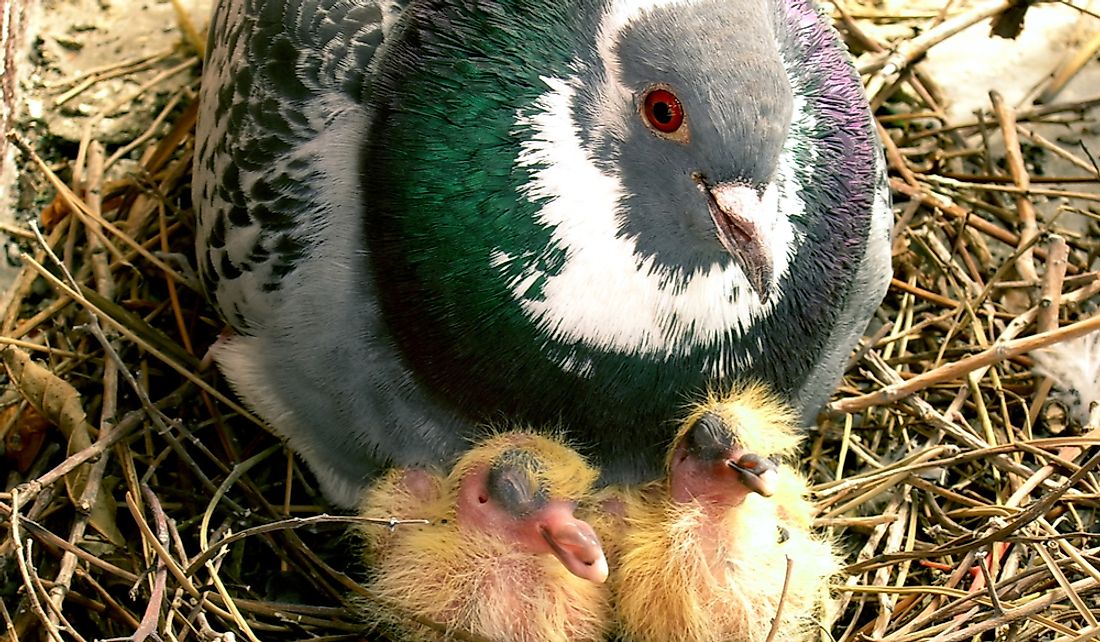What Is Pigeon Milk? Do Birds Produce Milk?

Producing milk to feed offspring is the domain of mammals like whales and humans. However, the trait is not only limited to mammals. The flamingo, pigeon, and male emperor penguin are the three species of birds that produce a milk-like substance known as crop milk or pigeon milk to feed their young ones. Unlike mammals who produce milk through the mammary glands, lactating birds regurgitate crop milk. Pigeon milk contains immune-enhancing and antioxidant factors, and just like mammalian milk, it helps to build the immune system of the young ones.
What Is Crop Milk?
The crop is located between the esophagus and the upper part of the bird’s stomach. Its core responsibility is to moisten the food before digestion. Pigeons begin producing crop milk two days before hatching, and this continues until the squabs are ten days old. Squabs that feed on pigeon milk have a better chance of surviving and will grow faster than those who do not. On one occasion, pigeon milk was fed to chicks, and the growth rate was 38% higher than other chicks. Both the male and female pigeons produce crop milk.
How Do Birds Produce Milk?
Pigeons normally use their crops to store food, but the crops change during lactation in response to changes in hormones and revert to the non-lactating state after the lactation period. Crop milk is produced by fat-filled cells; they are rich in protein, minerals, fats, and antibodies. Birds differ from mammals in that they do not have sweat glands, but they can accumulate fat in their skin cells which act like sweat glands. The production of pigeon milk is attributed to the ability of the skin cells to accumulate fat.
Comparison To Mammalian Milk
Crop milk does not really resemble mammalian milk in that the former is a semi-solid substance that looks more like pale yellow cottage cheese. It contains higher levels of fats and proteins than human and cow milk. The antioxidant and immune boosting factors also increase the chances of the young ones surviving. Just like human milk, pigeon milk contains antibodies and some bacteria. While the mammalian milk is an emulsion, crop milk is a suspension of fat rich and protein-rich cells that detach from the crop lining. Prolactin is the hormone responsible for lactation in both mammals and lactating birds.











